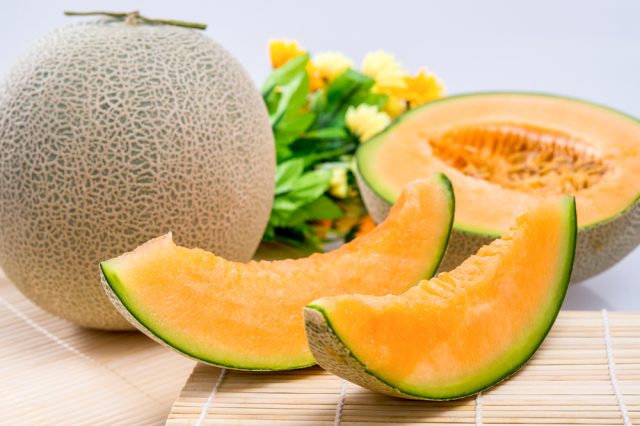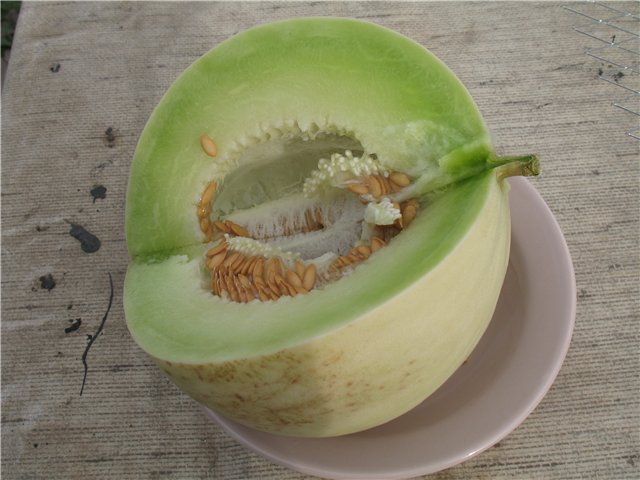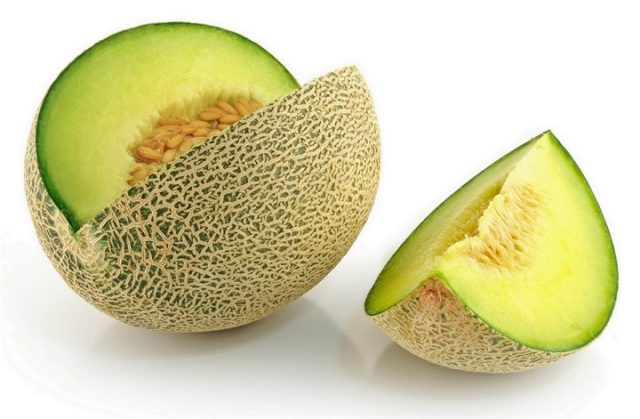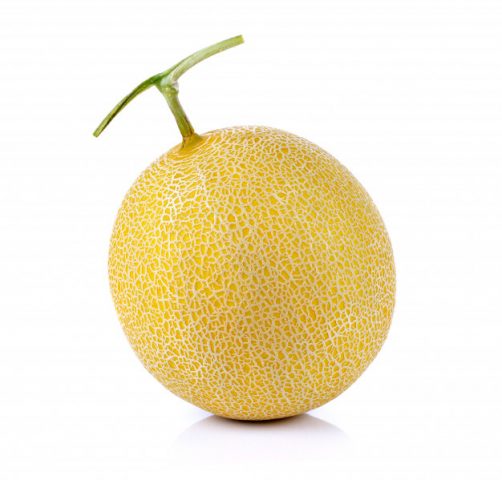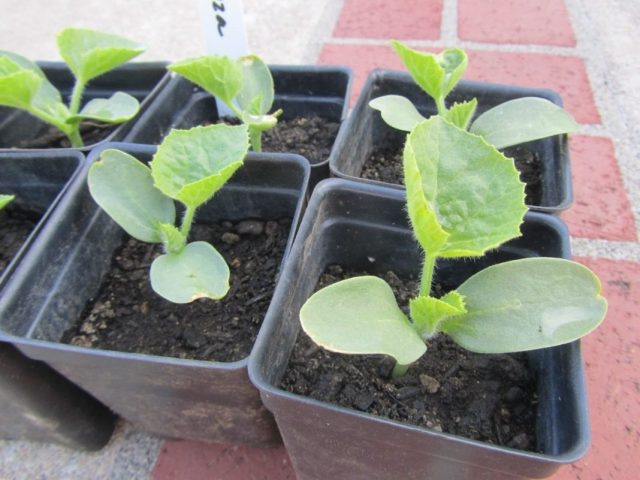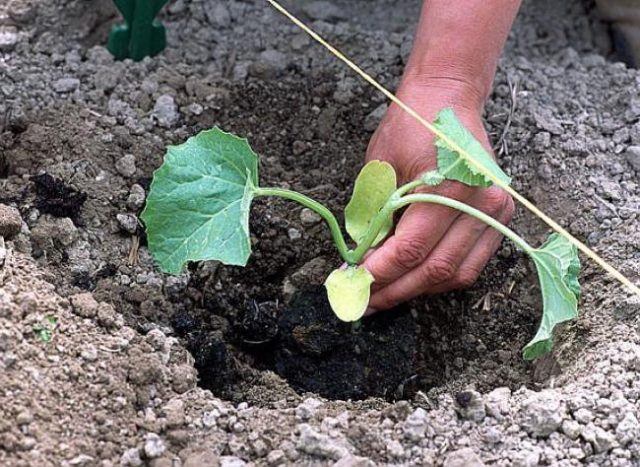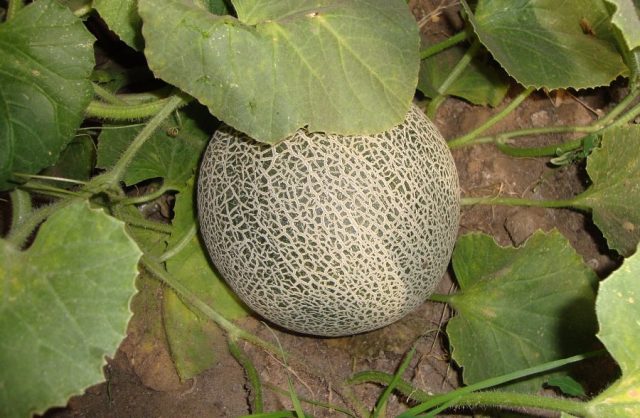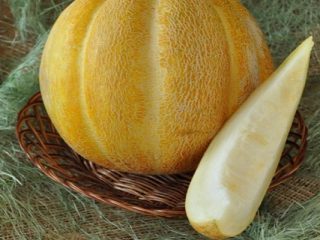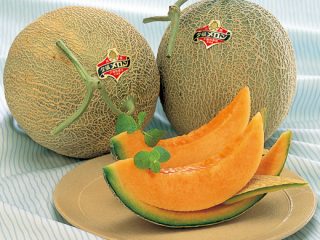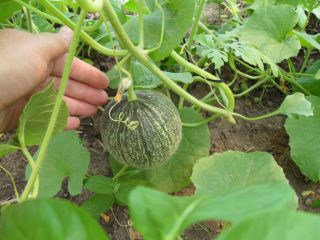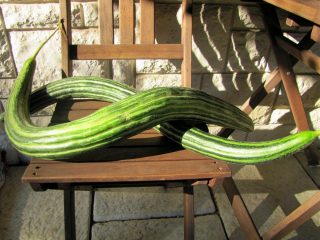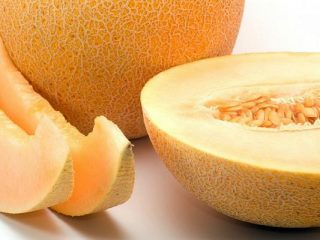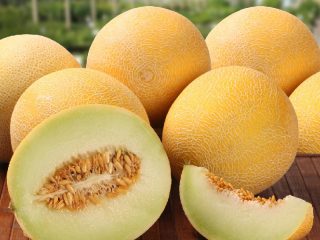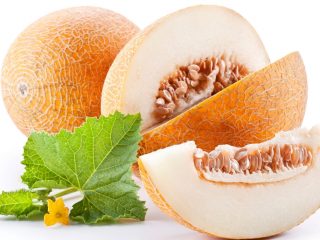Content
Few Russian gardeners grow melon in their summer cottages. This crop is traditionally cultivated in more southern regions. However, there is an exception to every rule. The exception is the Cantaloupe melon. This is the only type of melon that can be successfully grown in Russia.
Description of Cantaloupe melon
Cantaloupe melon belongs to the Cucurbitaceae family. The homeland of this plant is the territory of modern Turkey. The melon got its name in honor of the Italian town of Cantolupo in Sabino. Here was the estate of the Pope, to whom these fruits were once presented for dessert.
The botanical description and characteristics of Cantaloupe melon are given in the table:
Characteristic | Meaning |
Type | Annual herbaceous plant |
Stem | Creeping, round-faceted, with antennae |
Leaves | Large, round-lobed, with long petioles, green in color |
Flowers | Large, pale yellow, bisexual |
Fruit | The pumpkin is round in shape and covered with a striped skin. The average weight of a ripe fruit is 0.5-1.5 kg |
Pulp | Juicy, orange, sweet, with a strong musky aroma |
Keeping quality and transportability | Low, shelf life should not exceed 3 weeks |
Disease resistance | High |
Ripening period | Mid-season, ripens in the second half of August |
Purpose of fruits | Consuming when ripe, making dried fruits, candied fruits, jams |
The strongest aroma gave this plant its second name - Musk. Sometimes Cantaloupe is also called Thai melon.
Cantaloupe melon varieties
Thanks to breeding work, many varieties of cantaloupe have been developed. The most famous of them are the following:
- Iroquois;
- Blondie;
- Charente;
- Gaul;
- Prescott;
- Parisian.
Muscat melon White
An early ripening variety, ripening in 60-70 days from the moment the seedlings are planted in open ground. The shape of the fruit is round, the peel is smooth. The weight of the fruit can reach up to 2 kg. The pulp is quite juicy and sweet, has a greenish tint.
Has good transportability. It is preferable to grow in greenhouses. The fruits can be consumed fresh or dried.
Melon Cantaloupe Green
The variety got its name due to the fact that the skin of the melon is green. The fruits are small, round in shape. Their average weight is 1-1.2 kg. The surface has a pronounced mesh texture. The peel is quite dense, so the crop can be easily transported over considerable distances.The pulp is greenish in color with a creamy tint and very juicy.
Melon Cantaloupe Yellow
The fruits of this variety grow up to 1.5-2.2 kg. They are round, segmented, with pronounced relief. Ripen at the end of August. In the middle zone, it is recommended to grow it in greenhouses, but there are also reviews of good yields when planting yellow Cantaloupe melon in open ground. The pulp is orange with a greenish tint, very juicy and aromatic.
It has a high sugar content (up to 14%), recommended for consumption both fresh and dried.
Growing Cantaloupe Melon
It is best to grow Cantaloupe melon in central Russia in a greenhouse. This is a guarantee that the fruits will ripen even in rainy and cold summers. The seedling method is most often used; in more southern regions, seeds can be planted directly in open ground.
Preparing seedlings
Planting seeds for seedlings is usually done in early April. It is preferable to use individual peat pots for this. This will allow you to avoid picking in the future and will greatly simplify further work on transplanting plants into open ground or a greenhouse. Before planting, the seeds are usually soaked overnight in a growth stimulant or aloe juice. The seeds are planted in a soil substrate, watered with warm water, after which the pots are covered with film and placed in a well-lit, warm place.
The soil in pots must be regularly ventilated and moistened with warm water. After 3-4 weeks, the grown plants are ready for transplanting. During this time, you need to prepare the beds on which the melons will grow.
Selection and preparation of a landing site
To plant Cantaloupe melon, you need to choose a sunny, well-lit place. The soil is preferably loose, light and breathable, loamy or sandy loam, with a slight acidic reaction. Melon beds can be dug up in advance, at the same time adding humus, rotted manure or compost to the soil, and then covering them with black covering material. This will allow the earth to warm up well. By the time the seedlings are planted, their temperature should be at least + 18 °C.
You should not choose low-lying places for planting Cantaloupe melons where water can accumulate. Therefore, initially the beds need to be made high or at least raised. Growing Cantaloupe in so-called “warm” beds that have good thermal insulation also gives good results.
Landing rules
After the ground has warmed up sufficiently, you can begin planting the Cantaloupe melon. They are usually planted in rows. The distance between neighboring plants should be at least 30-35 cm, between adjacent rows - at least 1 m. First, small mounds of earth are poured onto the beds in the right places, and planting is done on top of them. If the seedlings were grown in peat pots, they are planted with them. Otherwise, before removing the seedling, the soil in the pot must be pre-saturated with water to make it easier to remove the plants.
After planting, the mounds with seedlings and seeds are watered abundantly. At first, it is better to cover the plants with plastic wrap if they are planted in open ground. It can be completely removed after the plants have taken root and become stronger.
Watering and fertilizing
Cantaloupe should not be watered frequently. Watering should be rare but plentiful. Water should not be allowed to stagnate between rows or in furrows. You can increase the frequency of watering only during dry periods. You can determine the condition of plants by the leaves. If they turn yellow or become stained, it means the plant is not receiving enough moisture. Watering should be done strictly at the root, avoiding water getting on the leaves. Watering should be stopped completely at least a week before harvest.
There is no particular need to feed melons if manure or humus was added when digging the soil. If the soil is poor, plants can be fed with a small amount of nitrogen fertilizer. After flowering, Cantaloupe can be fed only with superphosphate and potash fertilizers. The use of organic matter is still a priority; if it is possible to do without mineral fertilizers, it is better to do so.
Formation
If you don’t take any measures to shape the plant, you may not get fruit at all. The melon will simply spend all its energy on the growth of the vine and the expansion of green mass. To limit growth and force it to bloom and bear fruit, pinch the top of the plant after 7-8 full leaves appear on it. This gives a powerful impetus to the lateral branching of vines and the appearance of flowers on them. After the formation of the ovaries, as a rule, 2 vines are left, on which 3-5 fruits are formed. In the future, you need to regularly pluck off the stepsons that the plant produces in excess.
In the photo there is a cantaloupe in the garden:
Because the Cantaloupe stem is a vine with tendrils, some gardeners grow this melon on a trellis or vertical mesh. In this case, the fruits are formed by weight and do not come into contact with the soil. If the vine lies on the ground, a wooden plank, piece of foam plastic or other material should be placed under each of the developing melons to prevent contact of the fruit with the ground.
Harvesting
The average ripening time for Cantaloupe melon is 60-70 days, while about a month passes from the moment the fruit ovary appears until it reaches removable ripeness. Fruiting is quite uniform, begins in the second half of August and continues until mid-September. Under good weather conditions, all remaining fruit ovaries can ripen. A sign of ripeness is the strong musky aroma that the ripe fruit emits.
You should not delay harvesting, as the aroma will weaken over time. Another sign is cracking of the stalk. In an overripe melon, it may fall off completely.
The harvested melons must be collected and transported carefully, avoiding any impacts. Cantaloupe has a limited shelf life, so harvested fruits must be consumed or processed within 3 weeks.
Diseases and pests
Diseases and pests rarely attack Cantaloupe. Their appearance is usually the result of improper care, for example, excessive watering, as well as a consequence of unfavorable weather conditions. Here are the most common diseases most often found on melons.
- Downy mildew. Identified by yellow spots on the leaves. The spread of the disease can be prevented by treating plants with fungicides, such as chlorothalonil. Preventing the appearance of this type of mold is by tying up vines or another way of limiting their contact with the ground, for example, growing them on a horizontal trellis.
- Microspherella rot. The vines become brittle and a yellow-orange liquid is released at the fracture site. This disease has no cure. The affected plant must be removed and the soil treated with fungicides. It is not recommended to plant melon in this place in the future.
- Fusarium wilt. Identified by gray spots on the leaves and the general lethargic state of the plant. Diseased plants must be destroyed and the soil treated with any fungicide.
Of the pests, Cantaloupe is most often attacked by the following insects:
- Nematodes. The presence of nematodes can be determined by characteristic nodes at the roots and stems of the plant. It is very difficult to remove nematodes. Most likely, you will have to abandon planting Cantaloupe in this place.
- Aphid. Identified by a black sticky coating on the leaves, which can lead to their wilting. Leaves with aphid colonies need to be torn off and destroyed, the plant needs to be treated with natural insecticides. You can use such products as Karbofos, Aktelik, etc.
- Spider mite. Identified by the presence of a thin web entangling the melon leaves. At an early stage, the spread of the mite can be stopped by tearing off infected leaves and treating the plants with acaricides. If the population is large, growing melon may have to be abandoned.
During the ripening period, Cantaloupe fruits can also be damaged by other pests. Therefore, it is so important to isolate them from direct contact with the soil.It is also important to keep the beds clean, promptly remove plant debris and prevent the soil from becoming waterlogged.
Use in cooking
Despite the small size of the Cantaloupe melon, culinary specialists around the world unanimously note its good taste and excellent aroma. This is what led to its wide distribution in various regions, from Asia to North America. Cantaloupe has a short shelf life, but even during this time the entire harvest can be processed. And its culinary uses are very wide.
Dried Cantaloupe Melon
Dried cantaloupe musk melon retains all the beneficial vitamins and microelements with which it is so rich. Its pulp contains riboflavin, folic acid, retinol, ascorbic and nicotinic acids - a real storehouse of useful substances. Making dried melon yourself is quite difficult, but it can be easily purchased at any store that sells dried fruits.
Pictured above is dried honeydew melon. This product retains its natural bright color, characteristic melon aroma and is an excellent substitute for artificial sweets.
Dried Cantaloupe Melon
Like dried, dried Cantaloupe is quite common in stores. You can try to prepare this product yourself by cutting the pulp of a ripe fruit into small pieces and drying them under the sun. They can be consumed as a sweetener, and also used as a filling for pies. Pieces of dried melon can be added to compotes or yoghurts.
Candied Melon Cantaloupe
Cantaloupe melon fruits have a pronounced aroma and excellent taste. In addition to valuable microelements, they contain beta-carotene. This is the only variety of melons with the presence of this substance in its composition.Candied fruits are widely used as a sugar substitute because they contain sucrose.
Cantaloupe melon calories
The calorie content of 100 g of Cantaloupe melon is only 33.9 kcal. This is approximately 1.5% of a person's daily requirement. To burn this amount of calories, it would take 4 minutes of cycling or 22 minutes of reading books. Dried melon is higher in calories, its energy value is 341 kcal per 100 g of product. 87% of the total calories come from the carbohydrates it contains, in particular sucrose. That's quite a lot. Therefore, Cantolupa should not be consumed by people with diabetes.
Reviews of Cantaloupe melon
Conclusion
Cantaloupe melon is quite easy to care for and does not require much labor to grow. In greenhouse conditions, this crop can be cultivated in a variety of regions, and we can say with confidence that the result will be good. A ripe Cantaloupe melon is sweet and aromatic, and especially when grown with your own hands.
